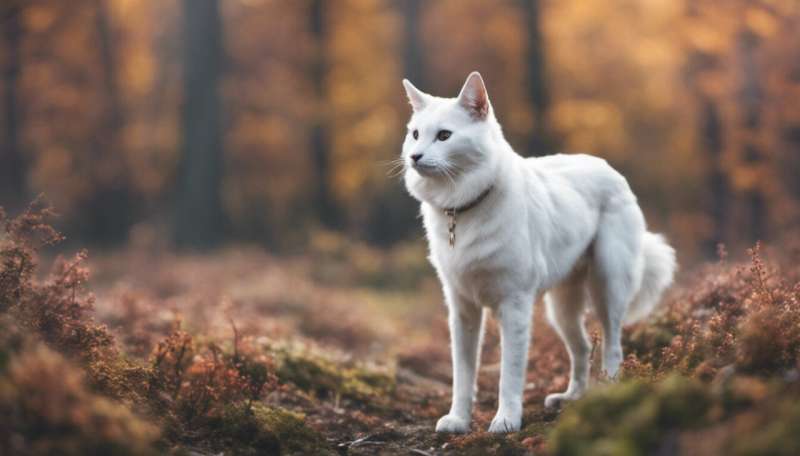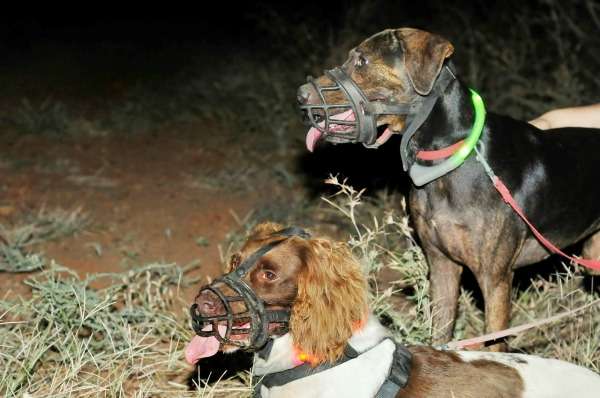Dogs chase cats in the name of science

It doesn't take a science degree to know that dogs like chasing cats.
But this age-old animal kingdom certainty has now been put to use as part of the biggest cat research project in the country.
Australian Wildlife Conservancy (AWC) scientists are using specially trained dogs to help capture cats, so the researchers can fit the felines with GPS systems and video cameras and then release them.
Information gleaned from such monitoring has shown cats frequent heavily grazed or recently burnt areas, thus informing conservation work to ease the massive threat that feral cats pose to rare and endangered native animals.
Previously AWC scientists relied on soft-hold jaw traps to catch the cats.
But cats are wily creatures and tricky to catch. There had to be another way.
Lightbulb moment: use an animal already very keen on chasing them. Dogs.
The first such dog was an enthusiastic springer spaniel named Sally. Sally underwent a training process that taught her how to chase cats, while ignoring all other animal scents.
University of Tasmania PhD student Hugh McGregor says Sally's only downfall was the cats' crafty nature.

"Sally was full of beans and enthusiasm but she wasn't the smartest in terms of cat hunting and there were many instances where the cats outwitted her," Dr McGregor says.
"It was that classic cartoon image of the dog chasing the cat, the cat stopping still and the dog jumping right over the cat and continuing to run."
Enter a new dog—a Catahoula named Brangul. While Brangul wasn't as enthusiastic about cat hunting she had the wits to counter the cats' evasion tactics.
Sally's enthusiasm for the hunt combined with Brangul's guile made for a great team and together the duo caught 114 of an attempted 160 cat captures over four years at Mornington Marion Downs Wildlife Sanctuary in the Kimberley.
AWC staff would spotlight for cats at night and release the dogs upon sighting the cats' glowing eyes.
The muzzled dogs would set off in pursuit and either chase the cats up trees, into caves or hold them to the ground until the scientists caught up.
Cats in trees or caves were darted with an anaesthetic to enable scientists to fit them with GPS collars or tiny video cameras before release.
Dr McGregor says dogs had a much higher success rate than live-trapping with leg-hold traps, took less effort in terms of person-hours and caused less physical injuries than leg-hold traps.
Provided by Science Network WA
This article first appeared on ScienceNetwork Western Australia a science news website based at Scitech.



















